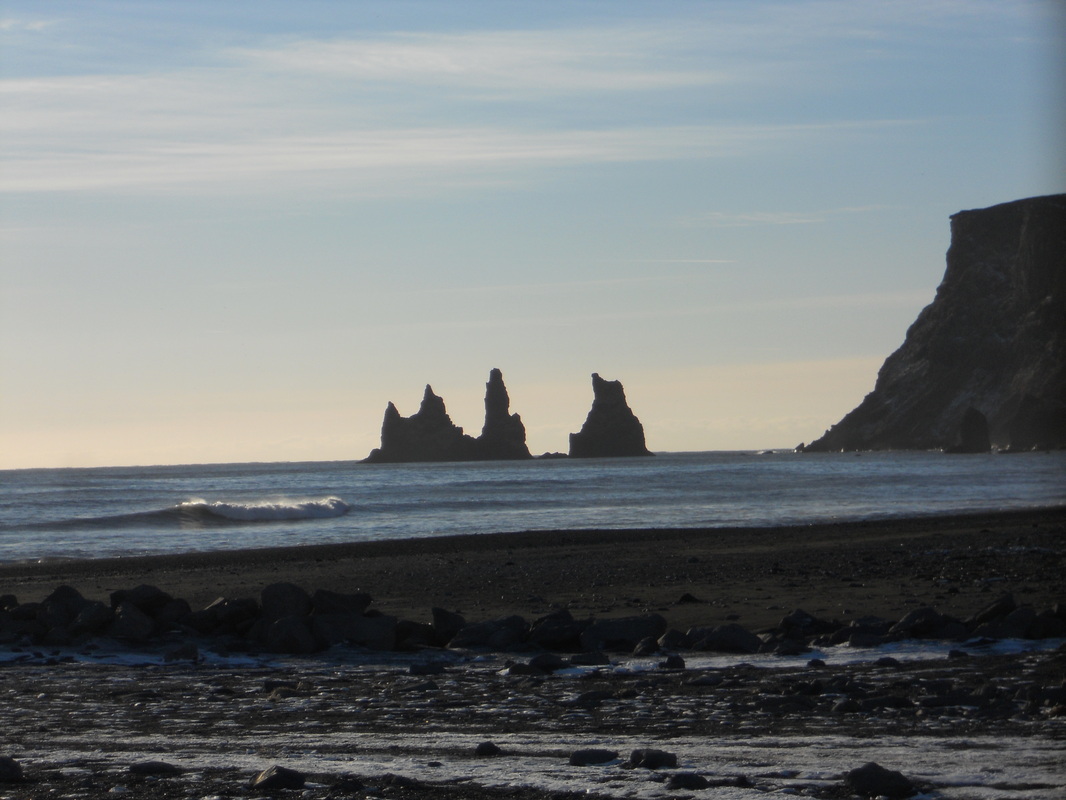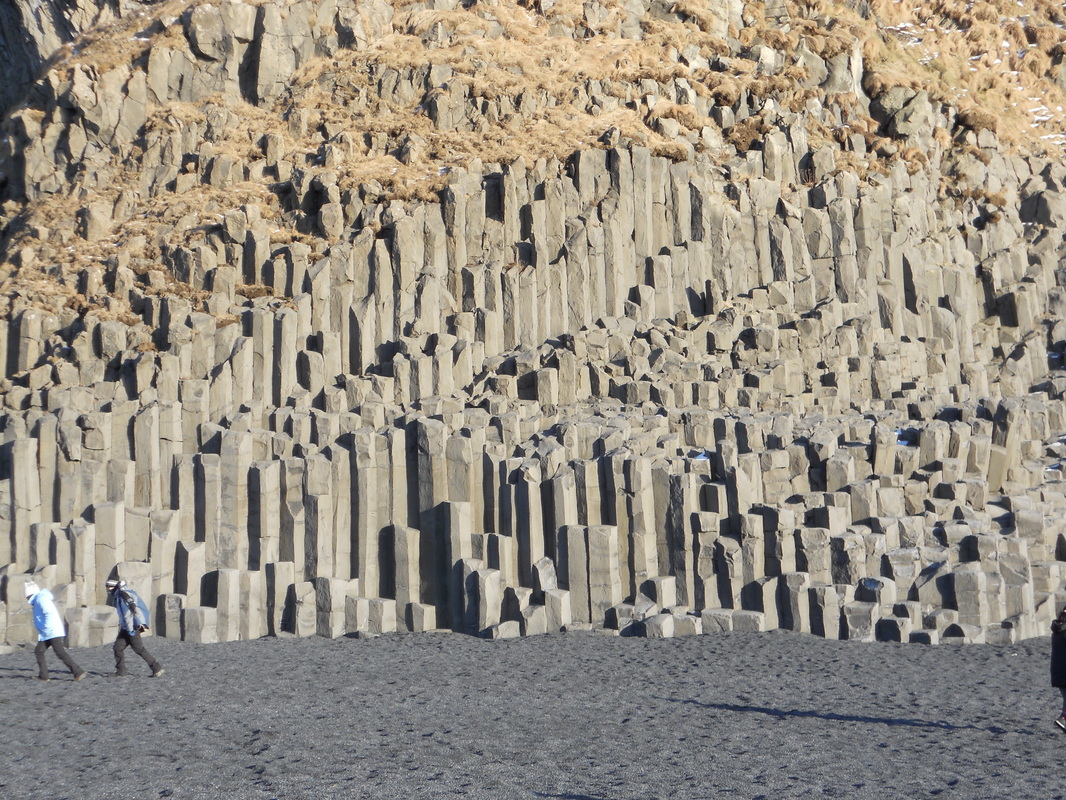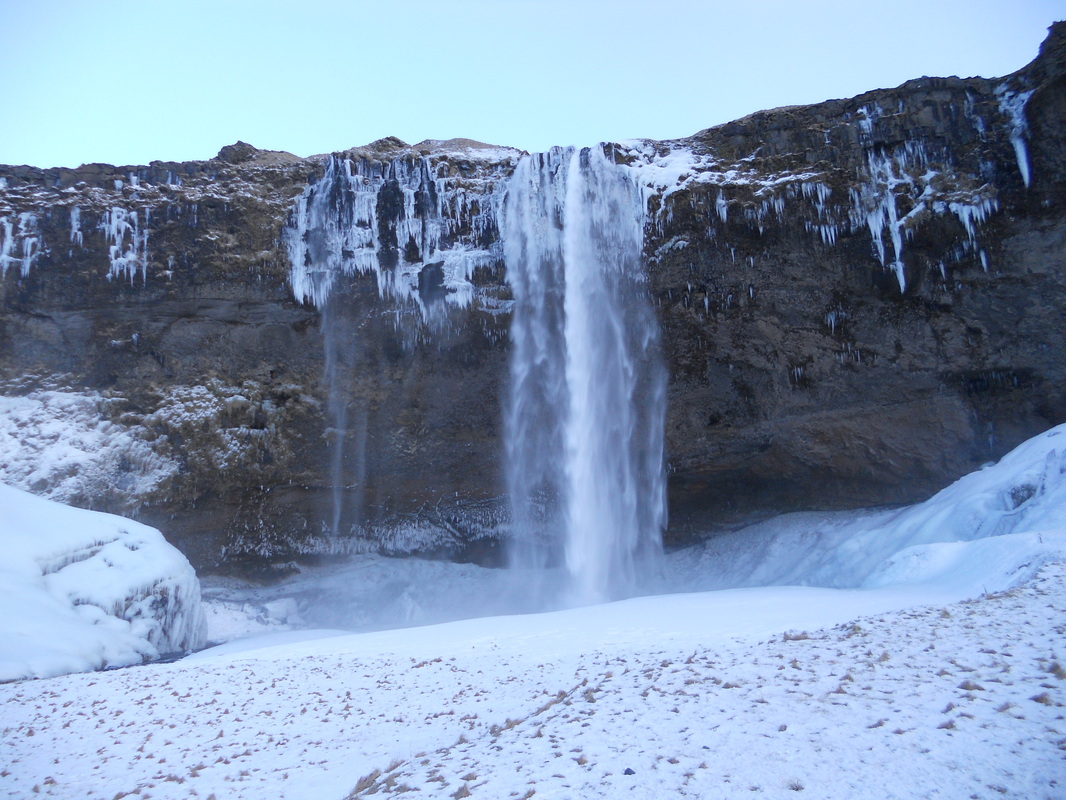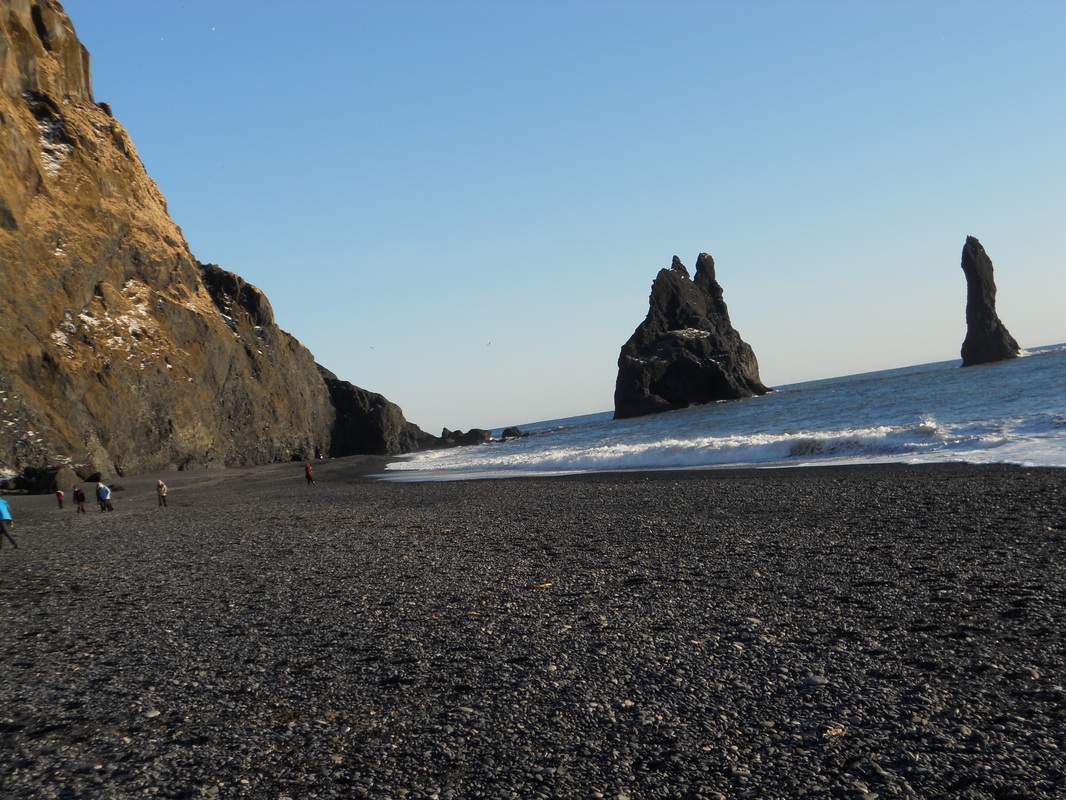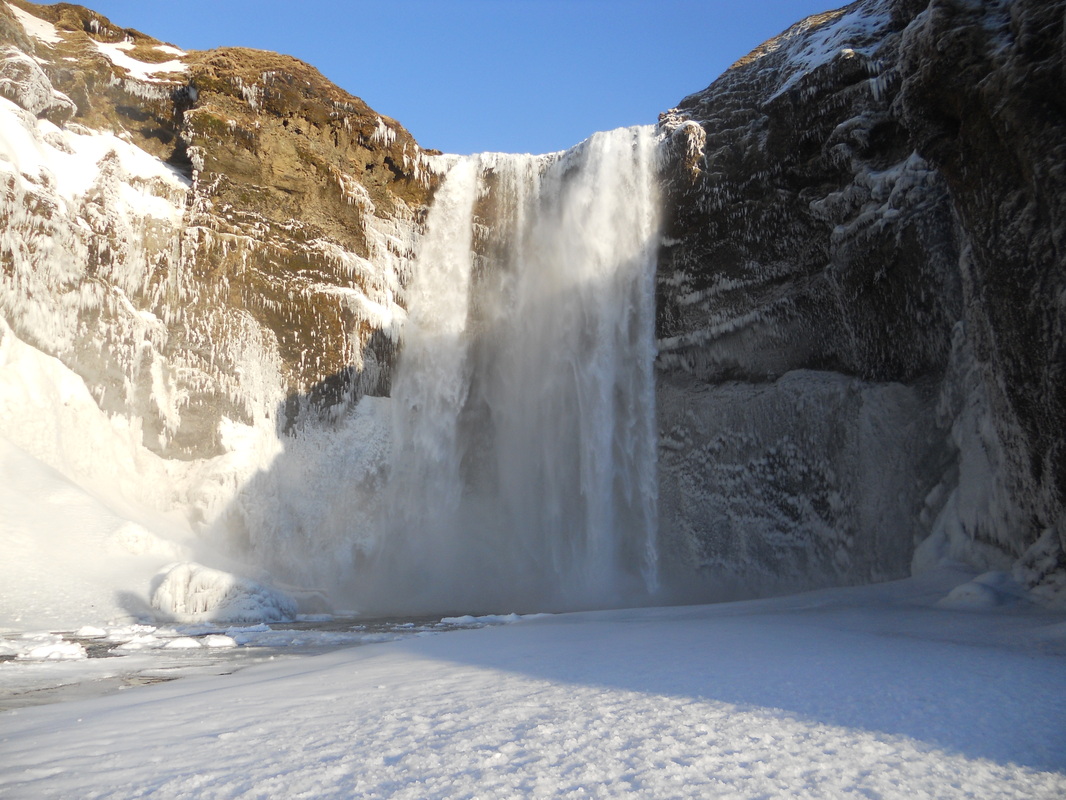This tour will take you to Seljalandsfoss Waterfall, Skógafoss Waterfall, Eyjafjallajökull Glacier, the one which erupted and brought a standstill in air traffic for a week in 2010, the famous Black Sand Beach at Vík. You will experience amazing coastlines, beautiful waterfalls, glaciers and black sand beach at Reynisfjara.
Seljalandsfoss: drops 60 metres (200 ft) over the cliffs of the former coastline. It is possible to go behind the waterfall.
Skógafoss: one of the biggest waterfalls in the country with a width of 25 metres (82 feet) and a drop of 60 m (200 ft). Due to the amount of spray the waterfall consistently produces, a single or double rainbow is normally visible on sunny days. According to legend, the first viking settler in the area, Þrasi Þórólfsson, buried a treasure in a cave behind the waterfall. The legend continues that locals found the chest years later, but were only able to grasp the ring on the side of the chest before it disappeared again. The ring was allegedly given to the local church. The old church door ring is now in a museum, though whether it gives any credence to the folklore is debatable.
The Black Sand Beach Reynisfjara: In 1991, the US journal Islands Magazine counted this beach as one of the ten most beautiful beaches on Earth. In the beach there are plenty of beautiful basalt columns called the pipes. Basalt columns are formed when lava flow gets cooled and contraction forces build up. Cracks then form horizontally and the extensive fracture network that develops results in the six sided formation of the columns. Out in the sea are the Reynisdrangar Rock Stacks. According to legend the stacks were formed when two trolls dragged a three-masted ship to land unsuccessfully and when daylight broke they were turned into rocks. The stretch of black basalt sand makes the place one of the wettest places in Iceland. The cliffs west of the beach are home to many seabirds, most notably puffins.

